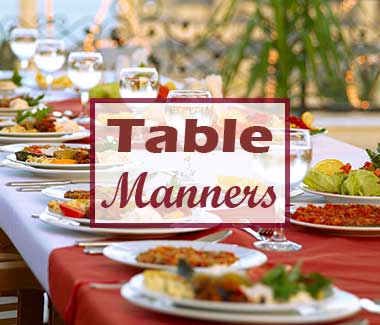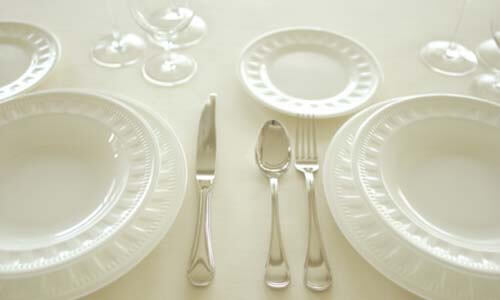Saving Money Dining Out
Is there a pricey restaurant that you have always wanted to visit but have not because you think you cannot afford it? Take heart. Chances are you can if you employ these money-saving tips.
Visit the restaurant for lunch because the cost of that meal in most establishments is approximately two-thirds that of the dinner price.
Take advantage of early-bird specials.
Have your cocktails and postprandial drinks at home because alcohol can increase the cost of a meal by 50 percent.
Remember this German proverb: "He who keeps his eyes shut must open his purse." Before sitting down, scrutinize the menu and query the maitre d'. You may discover, for example, that the cut-rate fixed-cost meal limits you to a hackneyed table d'hote dinner such as cream pea soup, roast chicken, and vanilla ice cream. Dishes of more than routine interest in this type of restaurant usually require surcharges.
Unless you want a full meal, you are better off ordering ala carte than table d'hote. The latter is no bargain when, for instance, you would normally have skipped the soup or dessert. Besides, the difference in price between ordering the table d'hote special and the identical items on the a la carte list is sometimes so negligible that the saving does not justify your sacrificing freedom of choice. Occasionally the saving is nonexistent. I've seen menus where the tally of the ala carte items is less than the ballyhooed table d'hote price.
If the restaurant has a hefty bread-and-butter charge, ask if this supplemental cost would be waived if the waiter removed the bread and butter from the table. Many restaurants acquiescethough, admittedly, some do it more gracefully than others.
If you are willing to forfeit gastronomic variety, it is possible to eat in most luxury restaurants for a relative pittance. I've seen corporate presidents spend only ten dollars ordering a hamburger and a cup of coffee in the exclusive 21 Club, where dinners average about fifty dollars per person. Luncheon salads and omelettes are among the other comparatively low-priced items that are frequently available in deluxe restaurants. A more creative alternative is to order something kooky, such as a plain baked potato accompanied by a glass of dry Madeira garnished with a carrot stick. The waiter, thinking you are on a trendy new diet, will probably not even bat an eyelash.
If you can't afford the food but want to experience the ambiance of a famous restaurant, drop by for a cocktail.
Should you be hosting someone in a high-price restaurant and your guest is eyeing the exorbitant fillet mignon, casually steer him or her in the right direction by casually remarking, "I understand the sole is great here."
When comparing prices of restaurants of equal quality, take into consideration portion size. One trick of the trade is to serve abnormally small amounts. By slicing the apple pie into seven rather than the traditional six slices, restaurateurs increase their revenue on that item by 17 percent. By cutting the pie into eight parts, they augment their apple-pie sales income by 33 percent without spending an extra penny.
Ethnic restaurants, for the most part, are well suited for dollarwatching diners. While establishments featuring classic Japanese, French, or Northern Italian cuisines can be prohibitively costly, those serving cuisines such as Chinese, Indian, Mexican, and Southern Italian should not scuttle too many budgets.
Some people practice an even less expensive way of eating out. They graze the mobbed bars that offer free hors d'oeuvres (not exactly a dietitian's dream) without buying a drink. Then there is the professional dining companion who is always quick to accept an invitation but slow to reciprocate.



